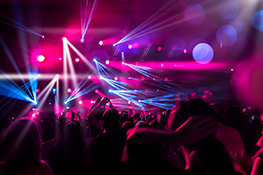Stage Lighting Power Calculations: A Simple Guide for Beginners
Understanding the Basics of Power Consumption
Before diving into complex calculations, it’s crucial to grasp the fundamental concepts. In the world of stage lighting, power is measured in Watts (W). This indicates the rate at which your lighting fixture consumes electrical energy. A higher wattage fixture generally means a brighter light, but also a greater demand on your power supply. Understanding wattage is the first step towards successfully planning your lighting rig and preventing overloading your circuits.
Calculating Total Wattage: The Foundation of Your Lighting Plan
The total wattage of your lighting setup is the sum of the wattage of each individual fixture. Let’s say you have the following fixtures:
- 5 x 500W Fresnels
- 3 x 250W PAR Cans
- 2 x 100W LED Profiles
To calculate the total wattage, simply add up the wattage of each fixture type and then add those totals together:
(5 x 500W) + (3 x 250W) + (2 x 100W) = 3,400W
Therefore, your total lighting load is 3,400 Watts.
Considering Amps and Voltage: The Electrical Equation
While wattage is important, it’s not the only factor to consider. You also need to account for amps (amperage) and voltage. These are related through a simple formula:
Power (Watts) = Voltage (Volts) x Current (Amps)
Or, rearranged to solve for Amps:
Current (Amps) = Power (Watts) / Voltage (Volts)
In most regions, stage lighting operates on either 120V or 240V. Knowing your voltage is critical for accurate amp calculations. Let’s assume you’re working with a 120V system. Using the 3400W total from above:
Current (Amps) = 3400W / 120V = 28.33 Amps
Understanding Circuit Breakers and Capacity
Your circuit breakers protect your electrical system from overload. Each breaker has a specific amperage rating. It’s crucial that the total amperage draw of your lighting system does not exceed the rating of your circuit breaker. Exceeding this limit can lead to tripped breakers, blown fuses, or even fire hazards. Always ensure your total amperage draw stays well below the breaker’s rating—leaving a safety margin is highly recommended.
Dimmers and Their Impact on Power Consumption
Dimmers don’t reduce the wattage of the fixture, but they do affect the current draw. While the fixture’s wattage remains constant, the dimmer controls the power delivered to the lamp. Therefore, even with dimmers, you still need to calculate the total wattage of your lighting system based on the maximum output of each fixture.
LED vs. Incandescent: Power Efficiency Considerations
LED lighting is significantly more energy-efficient than traditional incandescent or halogen fixtures. While an incandescent fixture might consume 500W to achieve a certain light level, an LED fixture could achieve the same brightness with only 100W. This substantial difference in power consumption translates to lower energy costs and less strain on your electrical system. Always consider the energy efficiency of your fixtures when planning your lighting design.
Safety First: Professional Advice and Inspections
These calculations provide a basic understanding. For large-scale productions or complex lighting setups, it is always recommended to consult a qualified electrician. Regular safety inspections are crucial to ensure your electrical system is functioning correctly and to prevent potential hazards.
Conclusion
Accurately calculating stage lighting power is essential for a safe and efficient production. By understanding wattage, amperage, voltage, and circuit breaker capacity, you can avoid overloading your system and ensure a successful lighting design. Remember to always prioritize safety and consult professionals when needed.


 Auditorium Construction Services
Auditorium Construction Services 